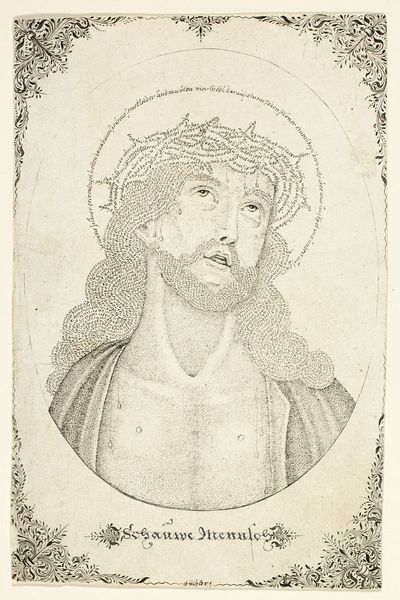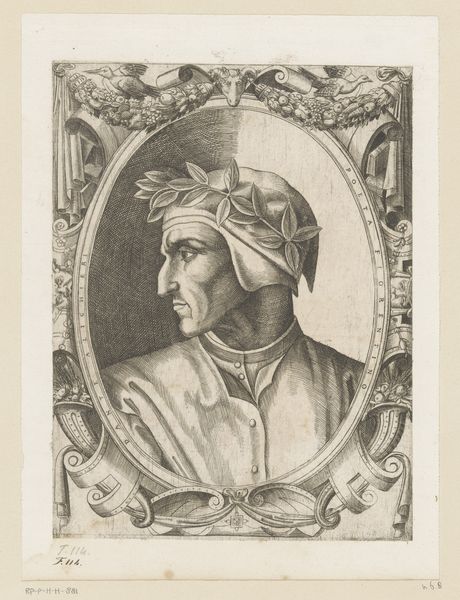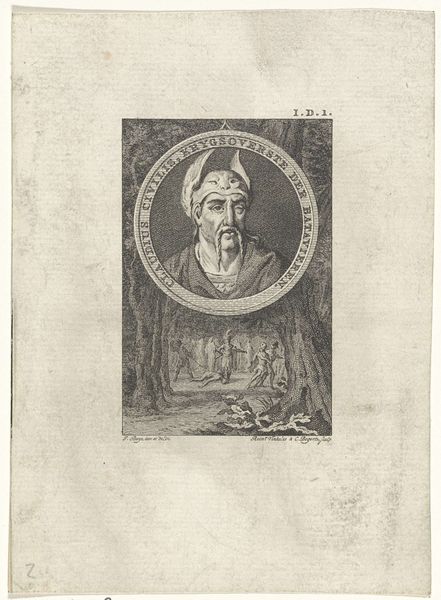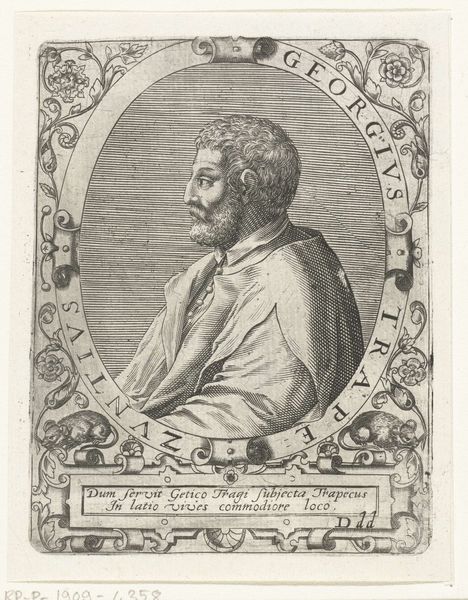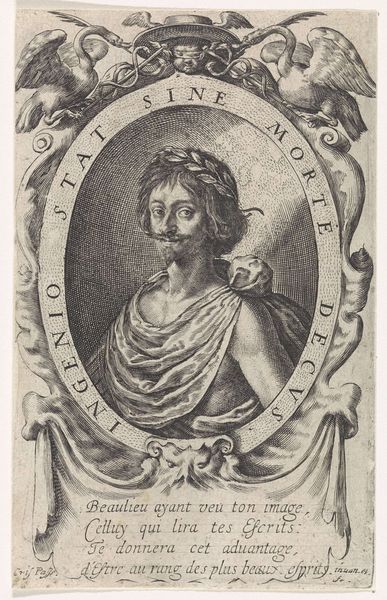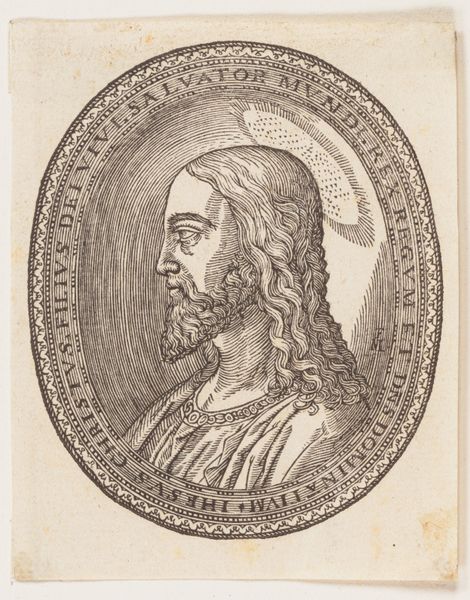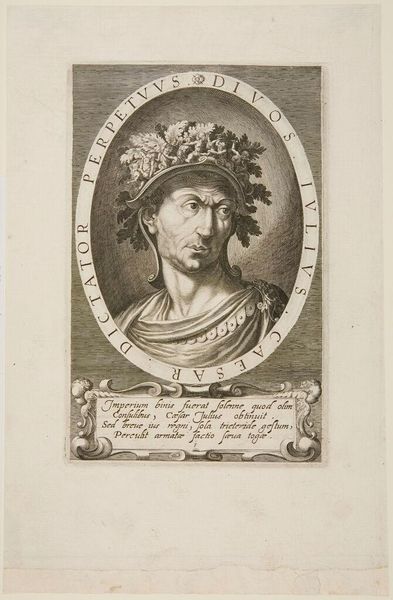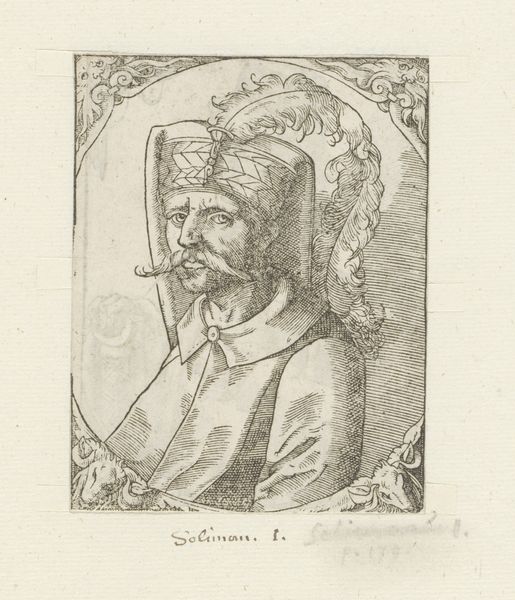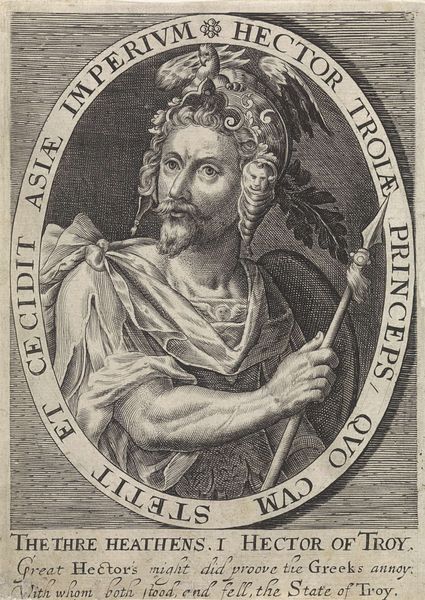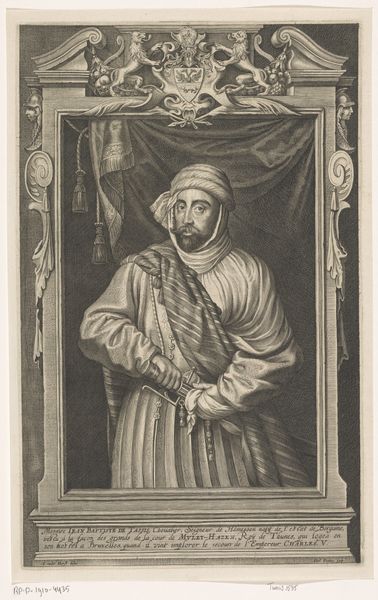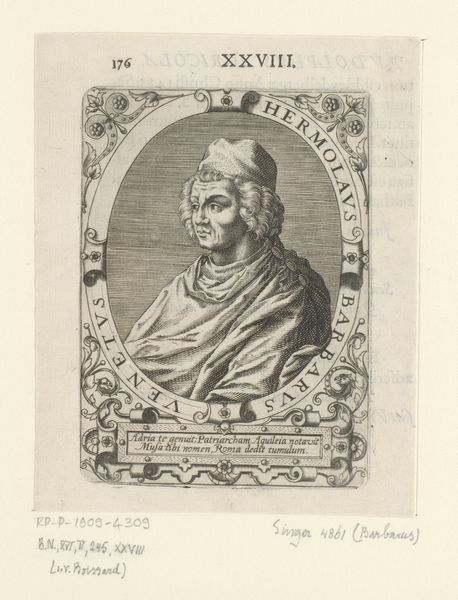
drawing, print, paper, engraving
#
portrait
#
drawing
# print
#
figuration
#
paper
#
11_renaissance
#
history-painting
#
engraving
Dimensions: 128 × 90 mm
Copyright: Public Domain
Curator: What a stark, arresting image. Editor: Yes, a wave of sadness just hit me. The man's weary expression cuts right through, despite the artifice of the style. Curator: We are looking at "Ecce Homo," a print of unknown date by Johann Michael Püchler. The image, made with engraving on paper, depicts Christ crowned with thorns. Editor: That title, “Ecce Homo,” "Behold the Man" Pontius Pilate's declaration as he presented a scourged Jesus to a hostile crowd... It implicates the viewer. Are *we* the crowd, complicit in his suffering? Curator: Indeed. The suffering of Christ is meant to evoke not just empathy, but also recognition of the universal human condition. What symbols do you observe? The crown of thorns, naturally, refers to His Passion. And the surrounding text, forming a halo, reinforces a similar theme. Editor: But the *entire* image is made up of tiny text. This isn't just ornamentation; it is integral. I’m finding it almost unbearable to meet his gaze. Are we supposed to be able to literally *read* the words that form his image? What effect does that produce? Curator: That's an excellent point. The words *do* matter. Notice also how the artist meticulously crafted every curve, every shadow. Each droplet of blood. Such artistic control echoes an effort to guide, or even dictate, our interpretation. It also evokes specific traditional representational practices tied to cultural expectations and values during the late Renaissance, in Europe. Editor: Right, to what extent does it encourage genuine pathos versus enforcing prescribed religious feeling, a sense of guilt and piety directed by religious doctrine. Curator: That tension is what gives this image its lasting power. The skill employed to forge this type of "devotional image" for viewers to emulate may provoke diverse responses within a contemporary public audience. Editor: Absolutely. Thinking about the conditions surrounding its creation illuminates some difficult truths. I feel its power more keenly, now. Curator: For me, the emotional power still resonates across centuries. It reveals enduring symbolic meaning, reminding us of the psychological depth inherent in religious iconography.
Comments
No comments
Be the first to comment and join the conversation on the ultimate creative platform.
